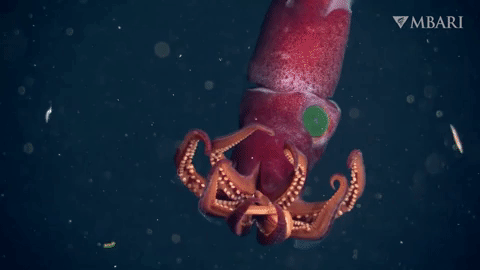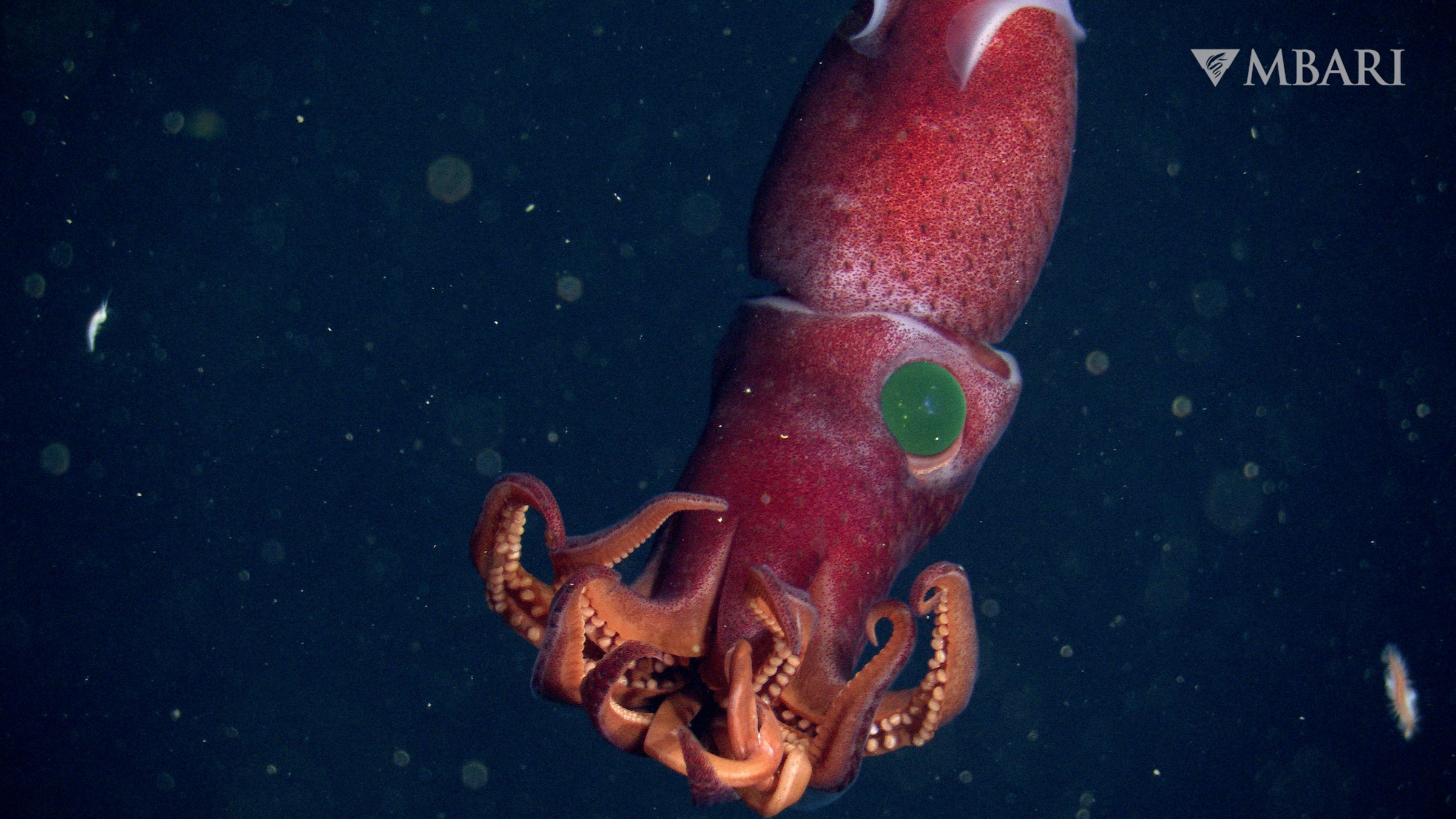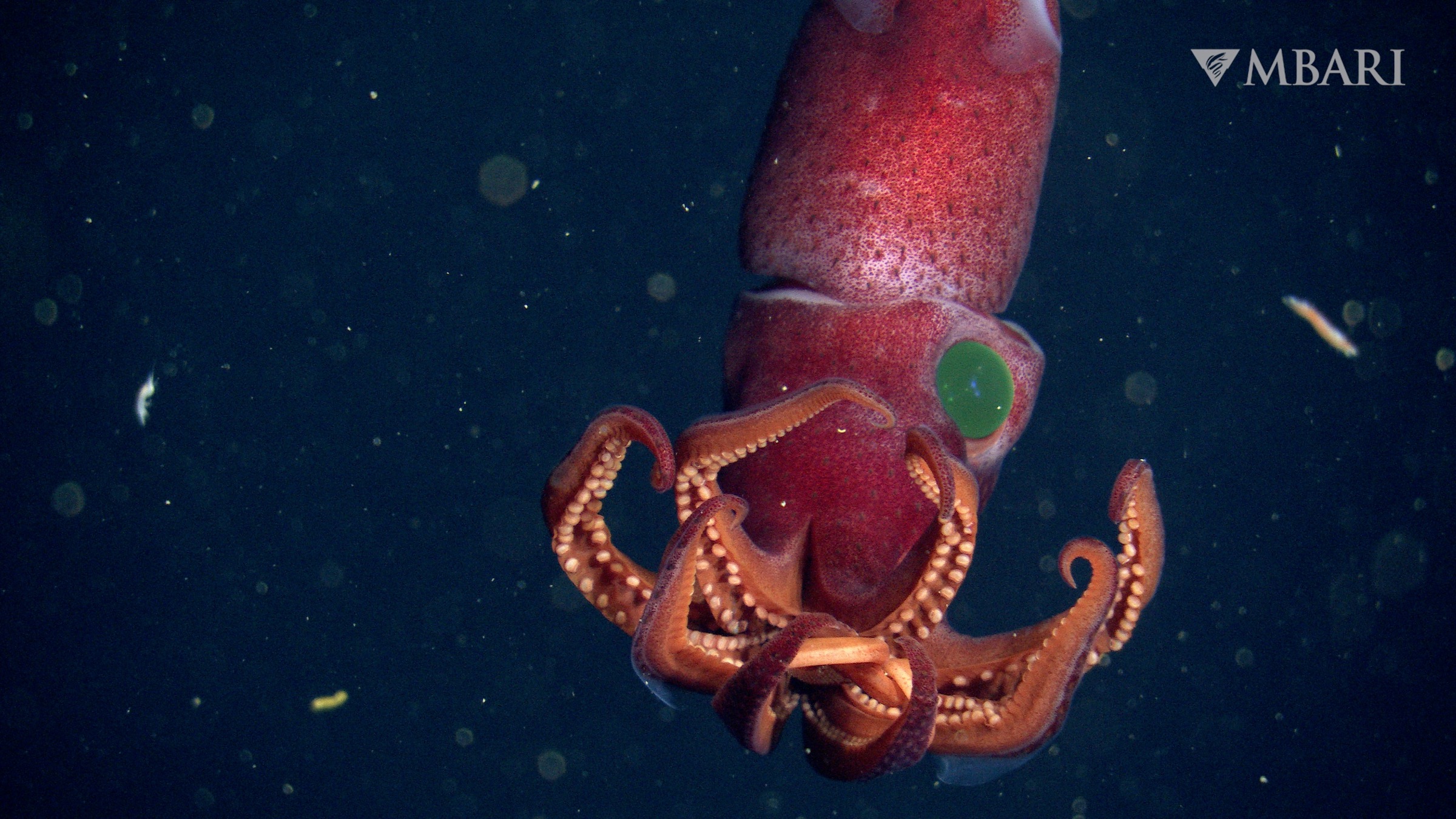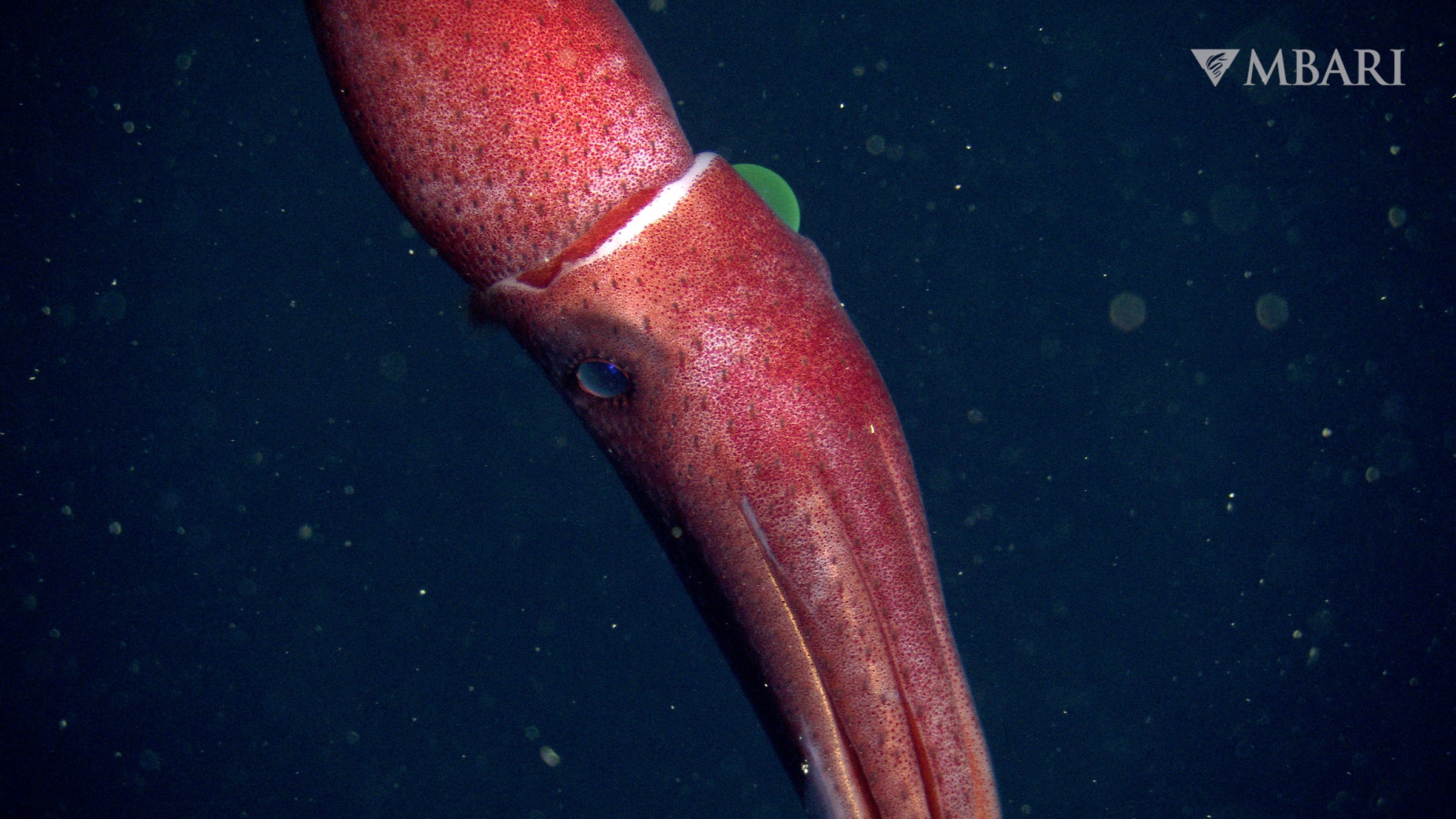Weird-eyed strawberry squid spotted in 'twilight zone' off California's coast
Strawberry squid forever.

On a recent deep dive into the twilight zone, a submersible hundreds of feet underwater filmed an unusual fruit-colored creature: a bright-red strawberry squid with eerie eyes — one small and black and the other large, bulbous and yellow.
Oblivious to the video camera, the strawberry squid (Histioteuthis heteropsis) cruised through its dark ocean home, occasionally twisting and curling its eight arms and two tentacles as its ghostly white fins rippled.
The sighting, which happened last month, wasn't totally unexpected, but it was still a pleasant surprise. "We see them often (maybe one dive in four), but they are far from abundant," Bruce Robison, a senior scientist with Monterey Bay Aquarium Research Institute (MBARI), told Live Science in an email. Robison, who wasn't part of the expedition that spotted this squid, leads the midwater ecology group at MBARI.
Researchers controlling a remotely operated vehicle (ROV) known as Doc Ricketts — an uncrewed submersible equipped with an ultra high-definition 4K resolution video — spotted the squid in Monterey Canyon off the coast of California. The canyon, home to diverse sea life, is nearly as deep as the Grand Canyon, making it one of the deepest submarine canyons on the West Coast of the U.S., according to MBARI.
Related: What's the difference between arms and tentacles?


The strawberry squid's mantle (the body, not including the eyes or appendages) can reach up to 5 inches (13 centimeters) long. The MBARI team tweeted about the encounter on March 23, saying, "Fresh from the deep! During a recent deep-sea dive, our team came across one of the most remarkable residents of the ocean's twilight zone: the strawberry squid (Histioteuthis heteropsis). We spotted this crimson cephalopod 725 meters (2,378 feet) deep in Monterey Canyon."
Fresh from the deep!During a recent deep-sea dive, our team came across one of the most remarkable residents of the ocean’s twilight zone: the strawberry squid (Histioteuthis heteropsis). We spotted this crimson cephalopod 725 meters (2,378 feet) deep in Monterey Canyon. pic.twitter.com/h1von2qZI5March 23, 2022
In a second tweet, the team noted that "The strawberry squid has one big eye and one small eye. Together, this unlikely pair helps the squid hunt for food in the ocean's twilight zone. The big left eye looks upward to spot shadows cast by prey in the dimly lit waters above."
Sign up for the Live Science daily newsletter now
Get the world’s most fascinating discoveries delivered straight to your inbox.
Meanwhile, the squid's smaller right eye looks downward, searching for "flashes of bioluminescence produced by prey or predators lurking in the darker waters below," MBARI tweeted. Due to its differently-sized eyes, the strawberry squid is sometimes called the cockeyed squid.

Strawberry squid, however, aren't born cockeyed. Rather, H. heteropsis hatchlings are born with two identically-sized eyes. As they develop into juveniles, the left eye surges in size, and by adulthood the left eye can be more than double the size of the right eye, MBARI reported.
On land, vibrant colors make animals stand out, signaling prospective mates or broadcasting a warning about toxic defenses. But for the strawberry squid, its bright red color actually helps keep it hidden in the ocean depths. "Red light does not reach the deep sea," MBARI reported. "There, a crimson coloration actually appears black and helps the squid hide from the gaze of predators like sperm whales, dolphins, tunas, swordfish and sharks."
The strawberry squid doesn't get its name just from its red color; the cephalopod has dark spots on its red body that look like teensy strawberry seeds. These spots are actually photophores, or organs that produce light through a chemical reaction or through symbiotic glowing bacteria. The strawberry squid uses its photophores to counter-illuminate itself, meaning that it uses this light to match its surroundings as a form of camouflage. This helps the squid avoid predators that might otherwise see its dark visage in the dim twilight zone, Robison said.
Robison added that the squid's "fin rippling is generally for station-keeping or slow cruising. When it wants to move quickly, it uses jet propulsion out the siphon. It has soft canard-like fins on its lateral arms like some jet fighters do."
Originally published on Live Science.

Laura is the archaeology and Life's Little Mysteries editor at Live Science. She also reports on general science, including paleontology. Her work has appeared in The New York Times, Scholastic, Popular Science and Spectrum, a site on autism research. She has won multiple awards from the Society of Professional Journalists and the Washington Newspaper Publishers Association for her reporting at a weekly newspaper near Seattle. Laura holds a bachelor's degree in English literature and psychology from Washington University in St. Louis and a master's degree in science writing from NYU.









